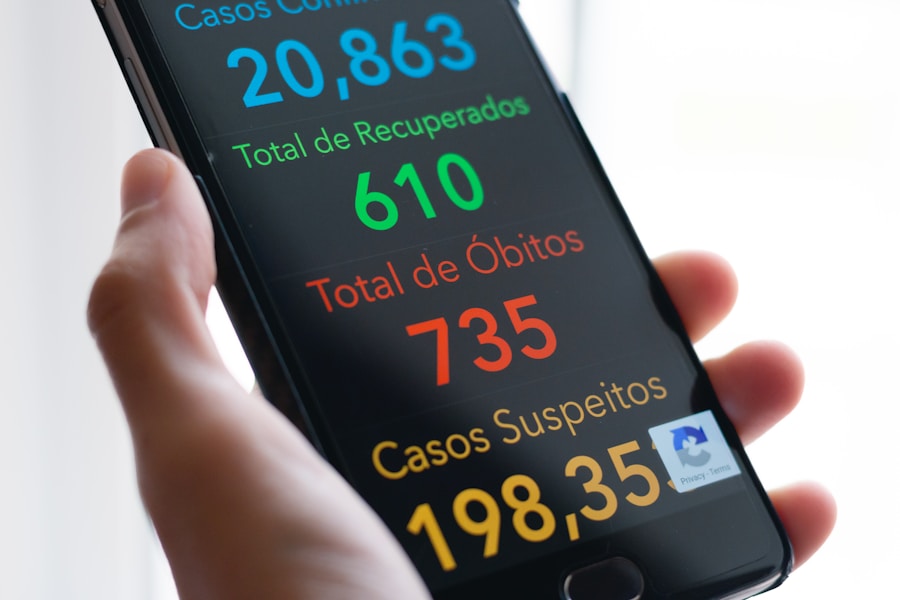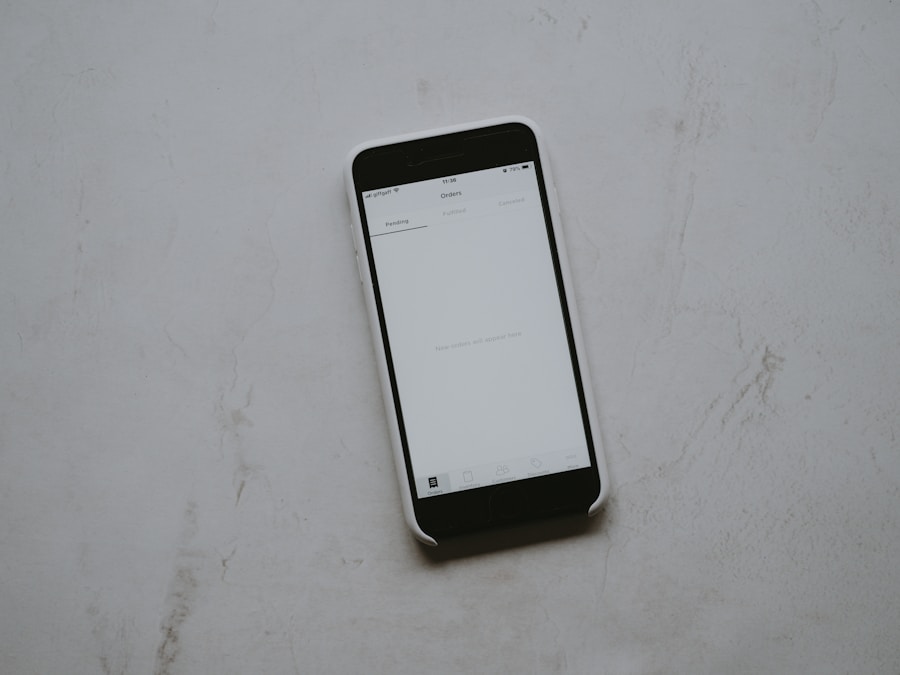In an increasingly digital world, managing personal finances has become more accessible and efficient, thanks in large part to the advent of expense tracker apps. These applications serve as powerful tools that allow users to monitor their spending habits, set budgets, and ultimately gain a clearer understanding of their financial health. With the proliferation of smartphones, particularly iPhones, these apps have gained immense popularity, offering users the convenience of tracking their expenses on-the-go.
The ability to categorize expenses, visualize spending patterns through graphs, and receive alerts for budget limits has transformed the way individuals approach their financial management. Expense tracker apps cater to a diverse audience, from students managing tight budgets to professionals seeking to optimize their savings. The user-friendly interfaces and customizable features make these apps appealing to a wide range of users.
As financial literacy becomes increasingly important in today’s economy, the role of expense tracker apps in promoting responsible spending and saving cannot be overstated. They empower users to take control of their finances, making informed decisions that can lead to long-term financial stability.
Key Takeaways
- Expense tracker apps help users monitor and manage their spending, budgeting, and financial goals.
- Key features to look for in an expense tracker app include ease of use, customizable categories, budgeting tools, and secure data storage.
- Top expense tracker apps for iPhone users include Mint, PocketGuard, Wally, Spendee, and YNAB (You Need a Budget).
- When comparing expense tracker apps, consider factors such as cost, user interface, customer support, and integration with other financial tools.
- To choose the right expense tracker app, consider your specific financial needs, budgeting style, and compatibility with other devices or platforms.
Features to Look for in an Expense Tracker App
When selecting an expense tracker app, it is essential to consider a variety of features that can enhance the user experience and provide valuable insights into spending habits. One of the most critical features is the ability to categorize expenses. This allows users to group their spending into different categories such as groceries, entertainment, transportation, and utilities.
By visualizing where money is being spent, users can identify areas where they may need to cut back or adjust their budgets. Another important feature is the ability to set budget limits for each category. This functionality not only helps users stay within their financial means but also encourages mindful spending.
Many apps also offer alerts or notifications when users approach or exceed their budget limits, providing a proactive approach to financial management. Additionally, synchronization with bank accounts and credit cards can streamline the tracking process by automatically importing transactions, reducing the need for manual entry and minimizing errors.
Top Expense Tracker Apps for iPhone Users

For iPhone users, several expense tracker apps stand out due to their robust features and user-friendly interfaces. One of the most popular options is Mint, which offers comprehensive budgeting tools alongside expense tracking capabilities. Mint allows users to link their bank accounts and credit cards for automatic transaction updates, making it easy to monitor spending in real-time.
The app also provides personalized insights and recommendations based on spending patterns, helping users make informed financial decisions. Another noteworthy app is YNAB (You Need A Budget), which takes a unique approach by encouraging users to allocate every dollar they earn towards specific expenses or savings goals. YNAB emphasizes proactive budgeting and offers educational resources to help users develop better financial habits.
Its mobile app is designed for ease of use, allowing users to track expenses on-the-go while staying aligned with their budgetary goals.
Comparison of the Best Expense Tracker Apps
| Expense Tracker App | Cost | Platform | Features |
|---|---|---|---|
| Expensify | 4.99 per month | iOS, Android | Receipt scanning, mileage tracking, expense report generation |
| YNAB (You Need A Budget) | 11.99 per month | iOS, Android | Budgeting tools, goal tracking, debt paydown planning |
| Mint | Free | iOS, Android | Expense categorization, bill tracking, credit score monitoring |
| PocketGuard | Free | iOS, Android | Bill negotiation, subscription tracking, personalized budgeting |
When comparing the best expense tracker apps available for iPhone users, several factors come into play, including functionality, ease of use, and pricing models. Mint excels in its comprehensive features and free access, making it an attractive option for those who want a robust tool without any financial commitment. However, its reliance on ads and promotional content may detract from the user experience for some individuals.
On the other hand, YNAB operates on a subscription model but offers a wealth of educational resources and a strong community support system that can justify the cost for many users. Its focus on proactive budgeting sets it apart from other apps that may simply track expenses without encouraging users to take control of their finances actively. Additionally, apps like PocketGuard and GoodBudget offer unique features tailored to specific user needs, such as cash envelope budgeting or simplified expense tracking.
How to Choose the Right Expense Tracker App for You
Choosing the right expense tracker app involves assessing personal financial goals and preferences. Users should consider what features are most important to them—whether it’s automatic transaction syncing, budget alerts, or educational resources. For instance, individuals who prefer a hands-on approach may find YNAB’s proactive budgeting philosophy appealing, while those looking for simplicity might gravitate towards Mint’s straightforward interface.
Another factor to consider is the level of integration with other financial tools. Some users may benefit from an app that seamlessly connects with investment accounts or savings platforms, while others may prioritize standalone functionality. It’s also essential to evaluate user reviews and ratings on the App Store to gauge overall satisfaction and identify any potential issues with specific apps.
Tips for Using an Expense Tracker App Effectively

Consistency is Key
Regularly updating expenses and reviewing budgets can help maintain an accurate picture of one’s financial situation. Setting aside time each week or month to review spending patterns can lead to valuable insights and adjustments in budgeting strategies.
Utilize App Features
Users should take advantage of all available features within the app. For example, utilizing categorization tools can provide clarity on spending habits, while setting up alerts can help prevent overspending in specific categories.
Empowering Financial Literacy
Engaging with educational resources offered by some apps can also foster better financial literacy and empower users to make informed decisions about their money.
Integrating Expense Tracker Apps with Other Financial Tools
Integrating expense tracker apps with other financial tools can significantly enhance overall financial management. Many expense tracker apps offer compatibility with budgeting software, investment platforms, or savings accounts, allowing for a more holistic view of one’s finances. For instance, linking an expense tracker app with a savings account can help users visualize how their spending impacts their savings goals.
Moreover, some apps provide features that allow users to track investments alongside their expenses. This integration can be particularly beneficial for individuals looking to balance daily spending with long-term financial growth. By consolidating various aspects of personal finance into one platform, users can streamline their financial management processes and make more informed decisions regarding their money.
Conclusion and Final Recommendations for iPhone Users
As iPhone users navigate the myriad options available in the realm of expense tracker apps, it is crucial to select one that aligns with individual financial goals and preferences. Whether opting for a free app like Mint or investing in a subscription-based service like YNAB, the right choice can significantly impact one’s ability to manage finances effectively. By leveraging the features offered by these apps and integrating them with other financial tools, users can cultivate better spending habits and work towards achieving their financial objectives.
Ultimately, the journey towards financial literacy and stability begins with taking control of one’s expenses. By utilizing an expense tracker app effectively and consistently reviewing spending patterns, individuals can foster a healthier relationship with money and pave the way for a more secure financial future.
If you are looking for the best personal finance app for iPhone users, you should check out the article The Best Personal Finance App for iPhone Users Revealed. This article provides a detailed review of the top personal finance apps available for iPhone users, including expense tracker apps. It also offers insights into the features and benefits of each app, helping you make an informed decision on which app to use for managing your finances effectively.


